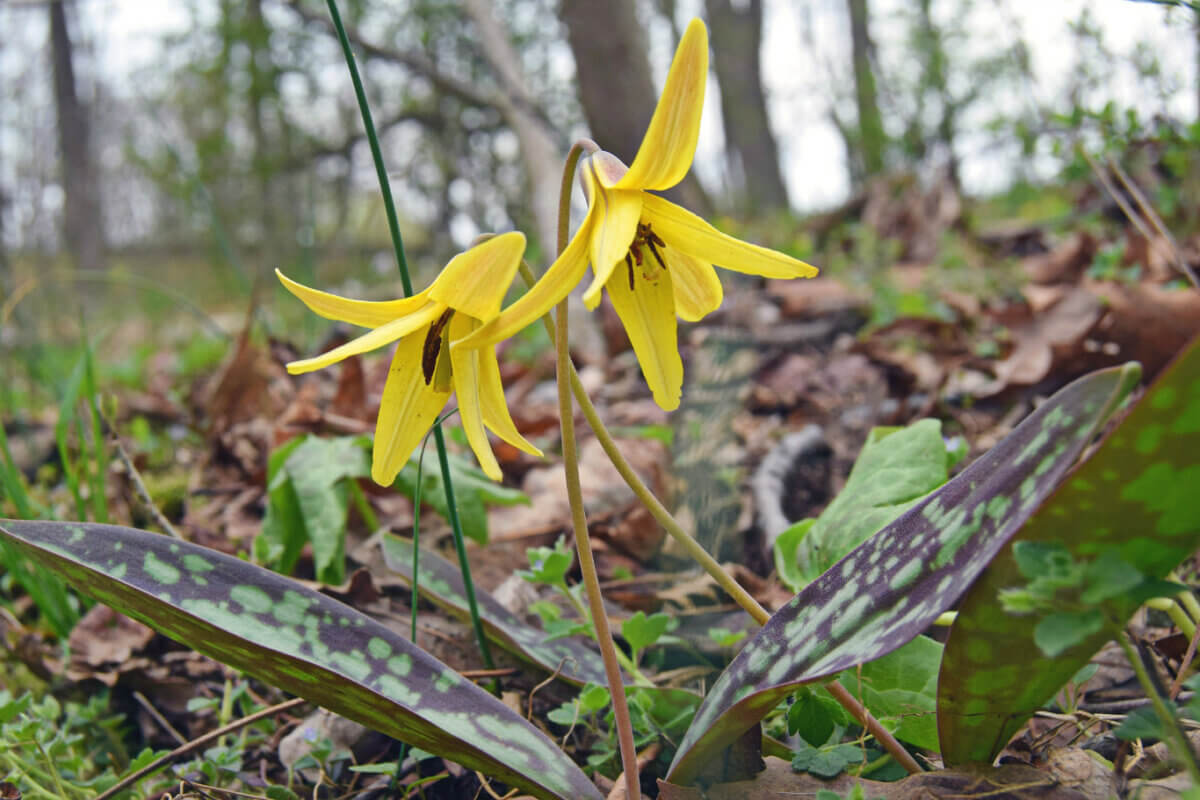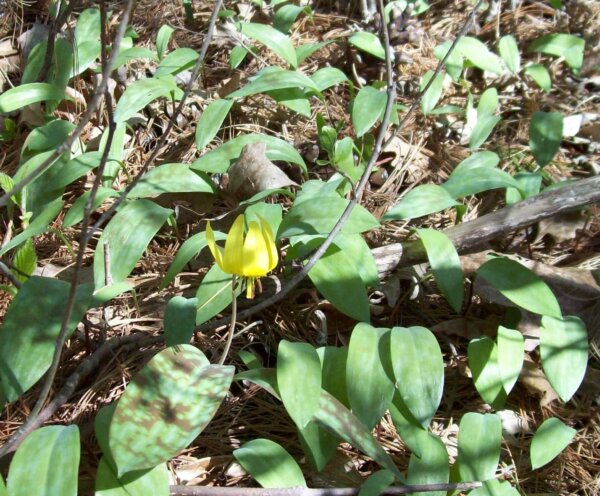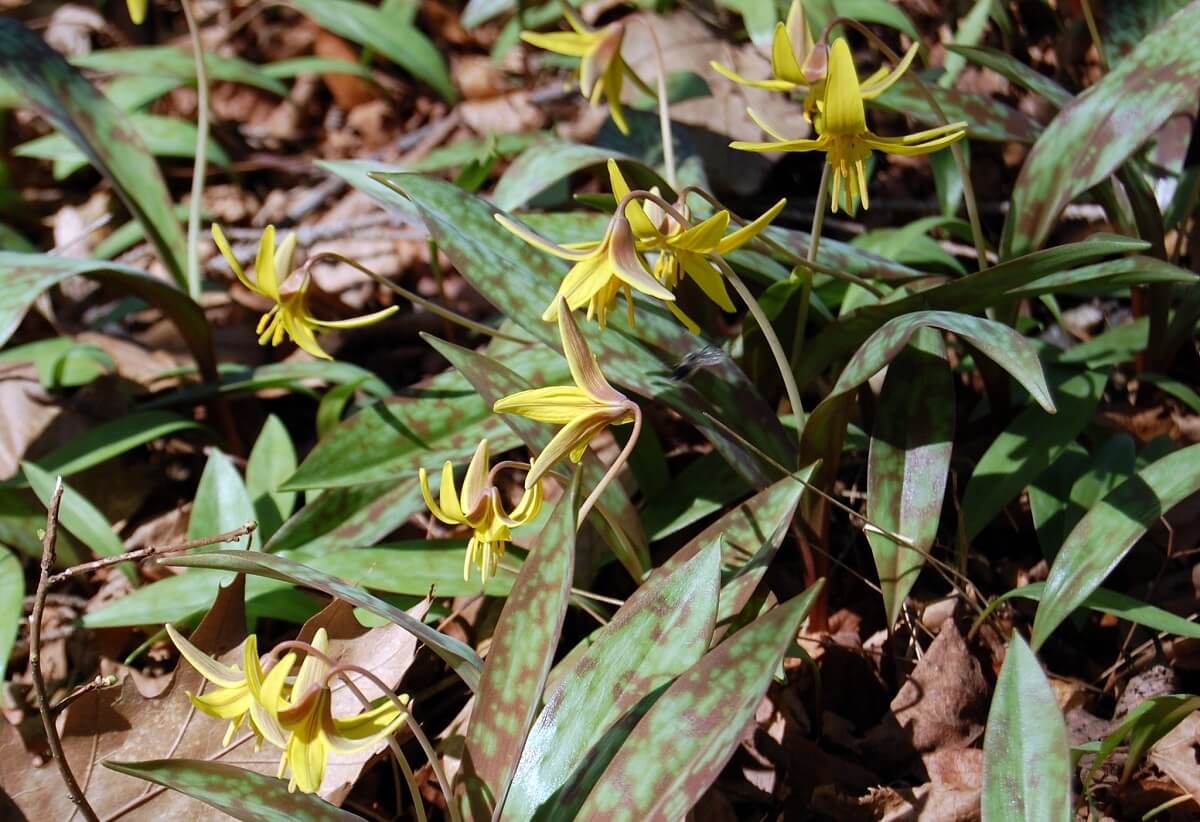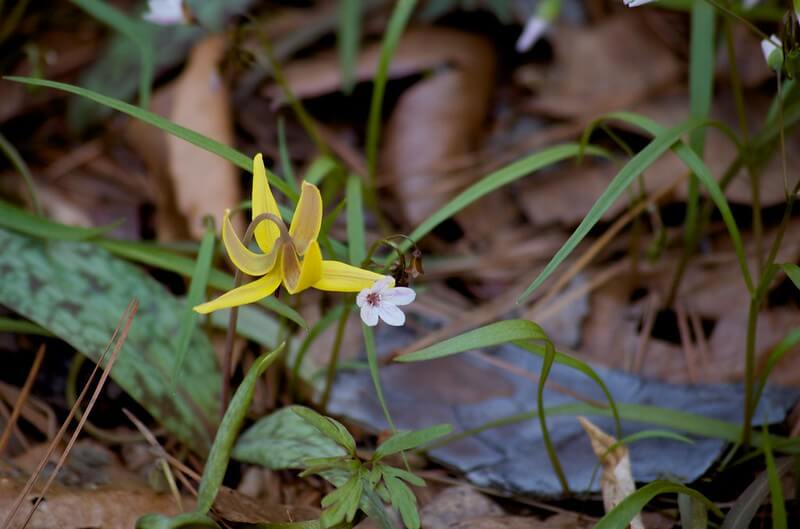When I first moved to the country, I was amazed at the bounty of both wildlife and wildflowers. I had a big job ahead of me—tidying the forested part of our property. I wanted to clear out the brambles and remove the garbage that had been randomly dumped in a place the previous owners believed was out of sight, and therefore, out of mind.
I’m a bit of a tidy freak, so garbage littering my property—and I’m talking years of construction waste dating back to the building of the house—was a big issue for me. The forested area just in front of my picture window, where I like to sit in the mornings at my Jane Austen spinet desk, was knee-deep in undesired refuse and prickly brambles.
It took me weeks to clean up the mess: digging out brambles, breaking the fallen branches into kindling for the woodstove, and dealing with the plots of construction refuse. I managed to clean up most of the yard that first fall and finished it early the following spring.
I was rewarded with a collage of colorful carpets of speckled green leaves that supported tiny yellow flowers. The display was short-lived, as the spring flowers gave way to the shade of the healthy tree growth that blocked the sunlight once tree leaves sprouted.

“What are these flowers?” I asked around. I wanted to know. I wanted to encourage their growth and the spreading of the tiny plants across my little forest’s floor.
“Probably trout lilies,” someone suggested. “Also known as dog-toothed violet or yellow adder’s tongue.”
I looked it up. “Trout lilies?” I questioned. “Who would choose to call a wildflower a trout lily?” I learned that these were, in fact, trout lilies and that the botanical name was Erythronium americanum. People started calling them trout lilies due to their speckled green leaves that resembled the scales along a trout’s back.
What started that first spring as a small patch in the sunniest part of my woodsy area, has now covered most of my little forest’s floor. It’s amazing. First, the leaves appear about one inch in length, dotted, speckled. As the annual spring cleaning progresses, more make their presence known. I can walk through them and on top of them, and they still bounce back—though I’m always careful when the flowers blossom.

The tiny yellow flowers, only one per plant, usually appear a few weeks after the leaves sprout across the ground. The sun, unhindered by new leaf growth on the trees, brings forth these little beauties. Once the trees are in full leaf, though, the flowers disappear along with their source of sunlight.
Trout lilies are an efficient self-spreading plant. But, on the downside, it often takes several years for new plants to sport flowers. It doesn’t really matter—the leaves, with their unusual coloring, make a fascinating forest floor covering.
The brief color show over for the season, all that’s left are skeletal remains of the flowers that drop carpels of seed. Deep underground, the long canine tooth-shaped bulb gives a reason for the trout lily’s other name: dog-toothed violet.
Until the plant matures, there is only one leaf; a mature plant has two leaves. Each plant, once mature, will grow one solitary yellow nodding flower, a hermaphrodite (both male and female) with six petals. It looks like a tiny, drooping lantern.

Part of the lily family (Liliaceae), trout lilies grow from an ovoid bulb that is found deep in the ground. It multiplies mostly by sending out runners but may also be spread by ants carrying its seeds. This latter method of spreading is probably the most likely scenario on my property, as I have a lot of ants (and I mean a lot!). Trout lilies are a lovely perennial, an early spring ephemeral (short-lived), that is very photogenic.
The amazing spread of this plant is called, apparently, a colony. Looking closer at my forest floor, I can see why it would be classified as a colony. These colonies can be hundreds of years old, the perennial appearing in the same moist, protected forest area year after year, as long as the area hasn’t been developed.
Trout lilies are mostly found in the eastern United States and Canada and in some areas in Europe and Asia. I’m certainly delighted to have them in my neck of the woods in rural Canada. They grow well in forested areas, particularly forests with a heavy growth of evergreens, which basically describes my little forest.

Delighted with these spreading plants, I made plans to start patches elsewhere. Whilst ants assist in the spreading the seed, we humans can do our part, too, if we’re so inclined. Like the ants, I collected the seeds and spread them in other wooded sections of my property. I also dug up some of the plants, digging a good 15 inches into the soil, so as not to cut the long tubular bulb, and re-planted the bulbs in an equally deep hole.
Not only are they lovely to look at, but trout lilies are also a medicinal and edible wildflower. I have to admit, though, I’m not sure that I want to be that adventurous, especially after reading that the corms, though edible and similar in taste to cucumbers, can be emetic if consumed in large quantities.
However, the leaves of the plant have a mild flavor, and the flowers are slightly sweet due to the nectar. The plant can be added to a salad or eaten as a trail snack. The corms can be roasted, and tea can be brewed using the flower, the leaves, the corm or all three.
A beautiful, photogenic, edible wildflower—this is definitely something I’ll enjoy each spring, as I allow it to prosper and spread.










































Awww, I have such good childhood memories of Trout Lilies. They carpeted an area of the backyard where I grew up, and they were one of my favorite heralds of spring. I used to lay on my stomach so that I could see up into the flowers without bothering them. I had no idea that ants propagated the flowers, though! Neat to learn.
I’m so glad you’re able to replace nasty garbage with life! I have cleaned up a few “out of sight, out of mind” garbage piles left behind by others, and I just…can’t…stand seeing that stuff covering the ground.
Yes, the out of sight out of mind garbage areas look much better as a trout lily growing field. Just wish they’d last all year.
Nice photos – the Trout Lilies around here (DFW area of Texas) that I have seen are not yellow Here is an older blog that I read that has nice pictures of the ones in this area.
Oops – http://dallastrinitytrails.blogspot.com/2014/02/texas-trout-lilies-abuzz.html – blog address.